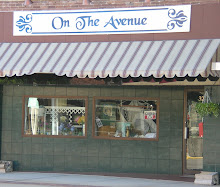Many antiques lovers use a long wave black light to date objects and test for authenticity. Some clues to age or telltale signs of repair aren’t easily visible to the naked eye, but will fluoresce under ultraviolet light. While it’s not the end all answer in antique authentication and dating, it is a good place to start.
1. Detecting Porcelain Repairs
Before buying or selling a nice piece of porcelain, always take it into a darkened room with either a handheld or keychain black light to test for repairs. A good repair job might not be readily visible without assistance, but will become obvious under a black light since glue used in repairs will fluoresce. Modern paints will glow under the black light as well, so you can also detect touch-ups, repaints and embellishments with ultraviolet light.
2. Testing for Reproduction Glass
Both green Depression glass and Vaseline glass will glow under a black light due the uranium oxide content in the glass. American colorless pressed glass made before 1930 is said to fluoresce yellow, while reproductions generally do not. Some people report that American brilliant cut glass also casts a yellow hue under ultraviolet light, others say it glows pale violet or blue. Given the discrepancies, make sure to follow up with further research to ensure cut glass authenticity.
3. Examining Works of Art
Since we now know that modern paint will fluoresce under a black light, you can also easily inspect paintings for touch-ups and repairs. Hairline cracks in oil paintings can also become more visible when examined under ultraviolet light. If you’re a serious art collector, or want to become one, it’s wise to buy a book specific to art inspection to learn more about how ultraviolet lights can be used to test for authenticity and repairs before purchasing a pricey works of art.
4. Testing Ephemera
Old postcards, books, signs, photos and other paper products made before the late 1930s rarely glow under a black light. However, chemical bleaches and dyes used in modern papers will fluoresce under ultraviolet light. Knowing this helps to detect forged documents and distinguish reproductions in all types of ephemera. Before purchasing a rare paper memorabilia, however, have it examined by an expert who will have knowledge and tools beyond black light testing to aid in authentication.
5. Dating Textiles
Many modern fibers like rayon and polyester, including sewing tread, will fluoresce under a black light. This helps to date quilts, vintage clothing, stuffed animals, rag dolls and other items made using cloth. However, additives in modern laundry detergents can cause old fabrics to glow under ultraviolet light if they were cleaned with these products. It’s wise to consider manufacturing techniques, design, provenance and materials used in construction in addition to black light exam results.
6. Authenticating Cast Iron
Many valuable vintage banks, mechanical toys and door stops from the early 1900s were made from cast iron. These genuine articles with original paint are still quite valuable to collectors. Since most modern paints will fluoresce, you can use your black light to check for reproductions and painted repairs on cast iron pieces prior to making an expensive mistake. If the paint doesn’t glow, look for other signs of age and wear to make sure the piece is really as old as you think it is.
Subscribe to:
Post Comments (Atom)


No comments:
Post a Comment